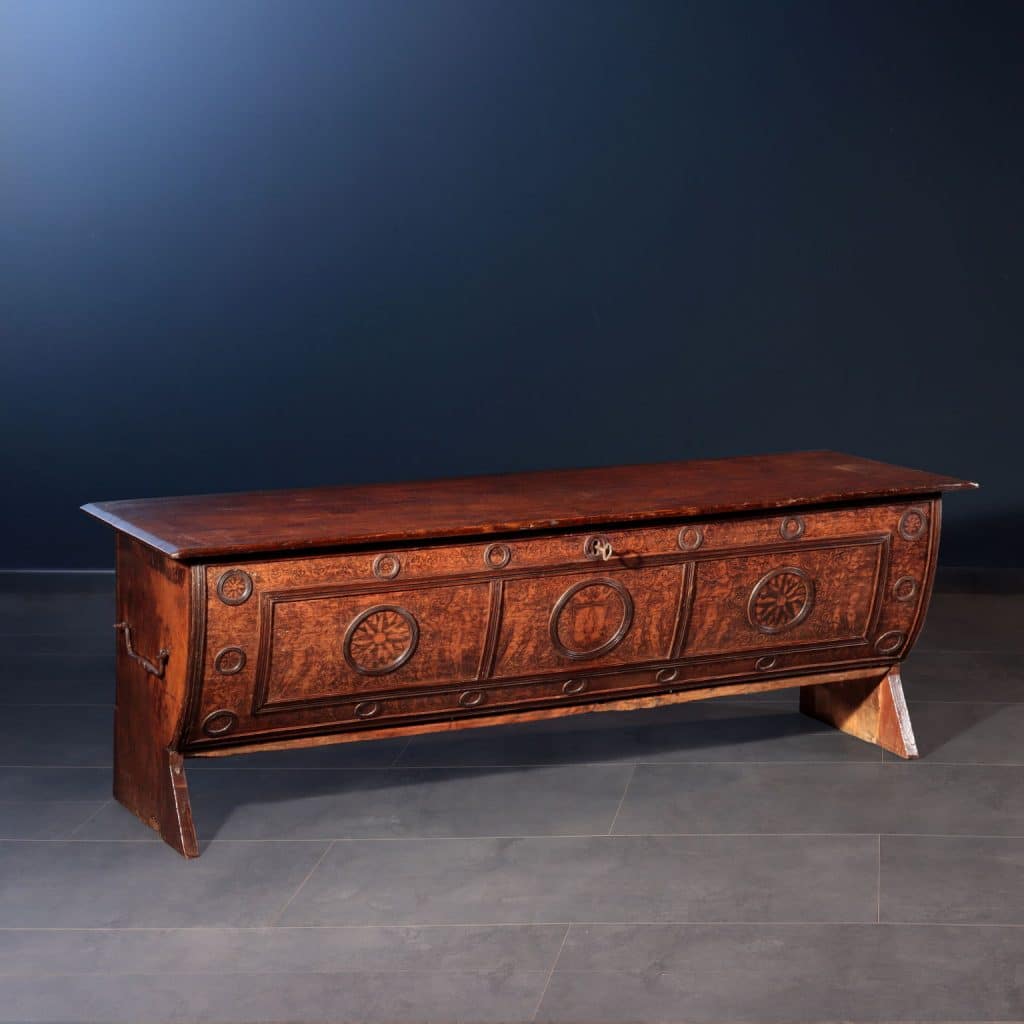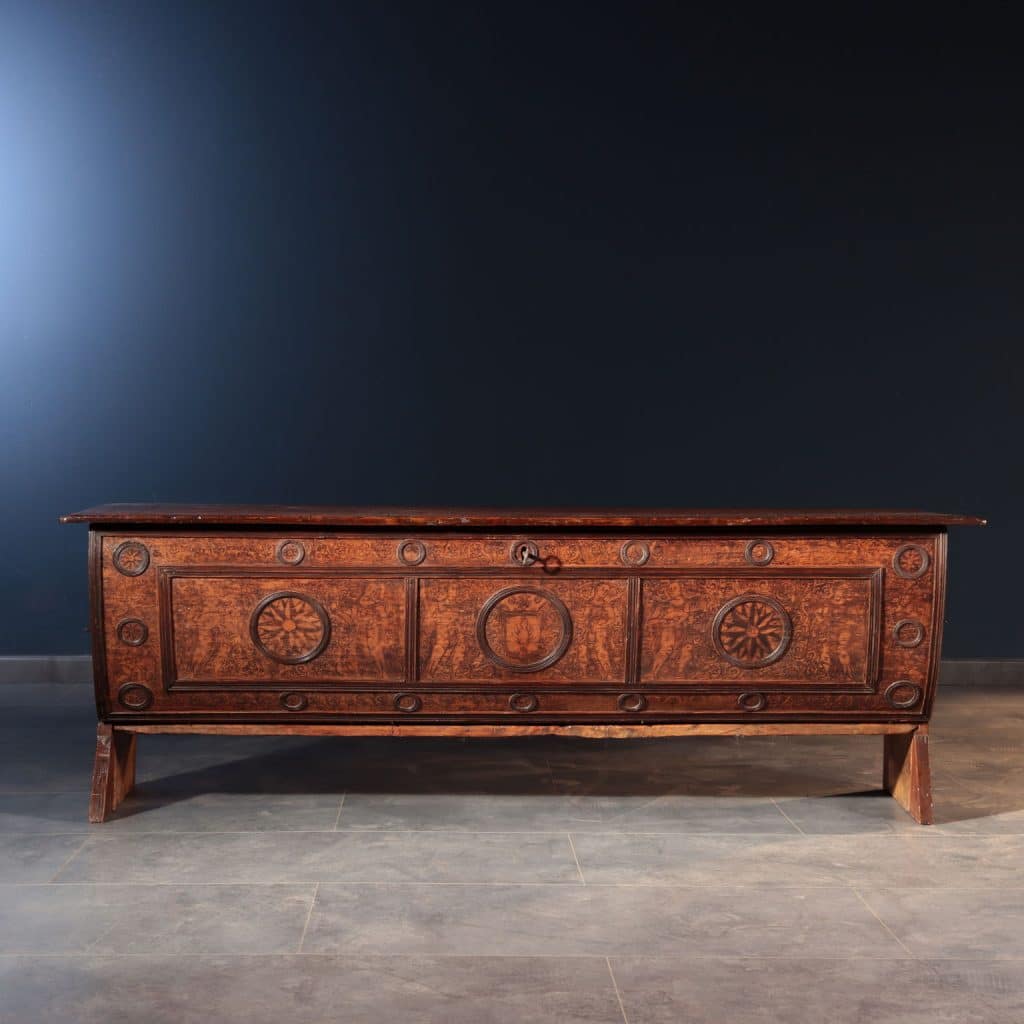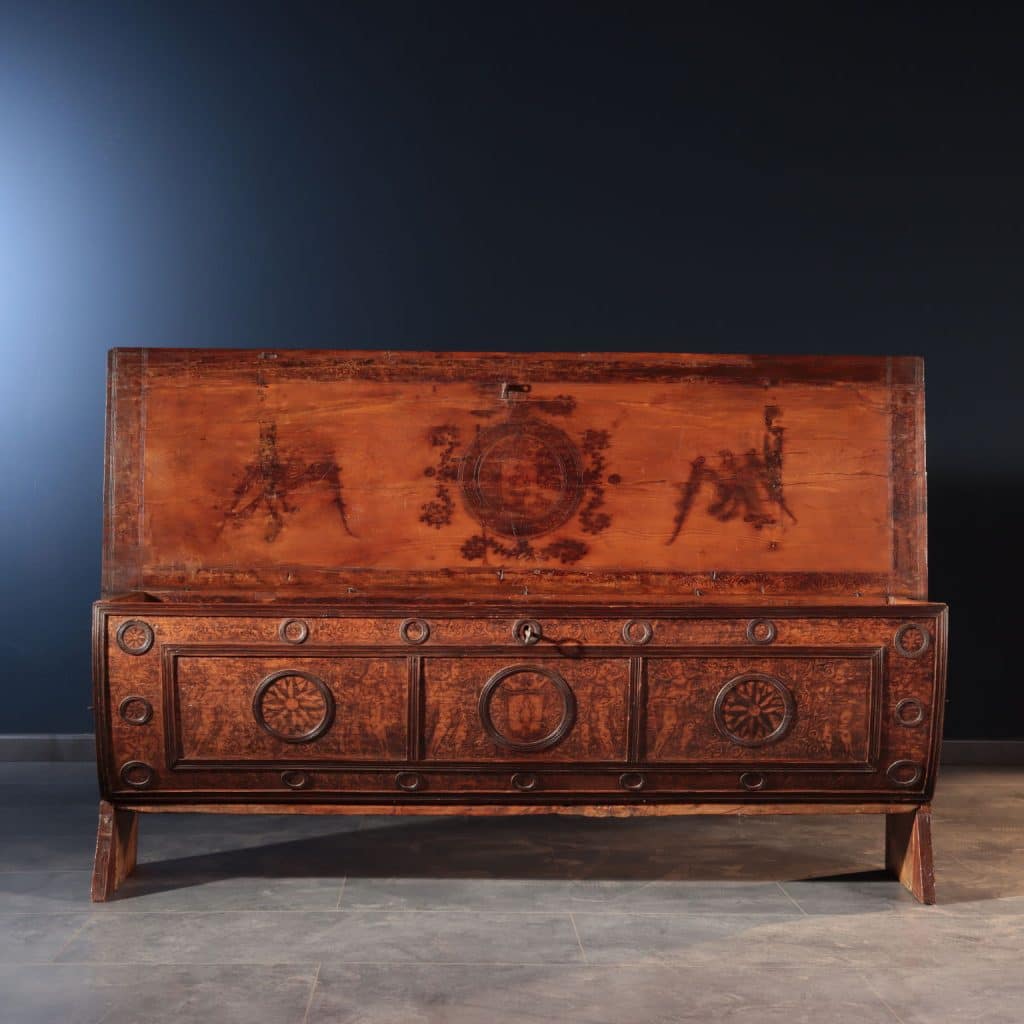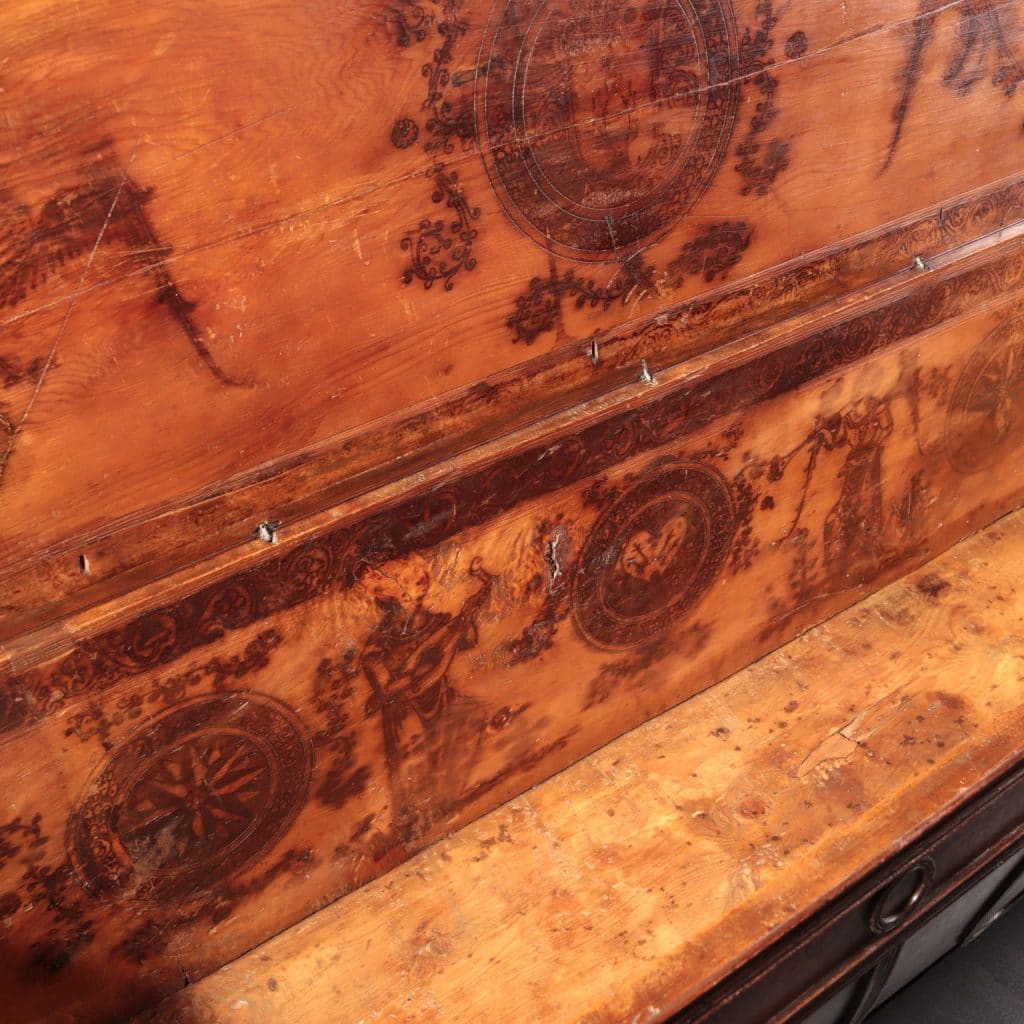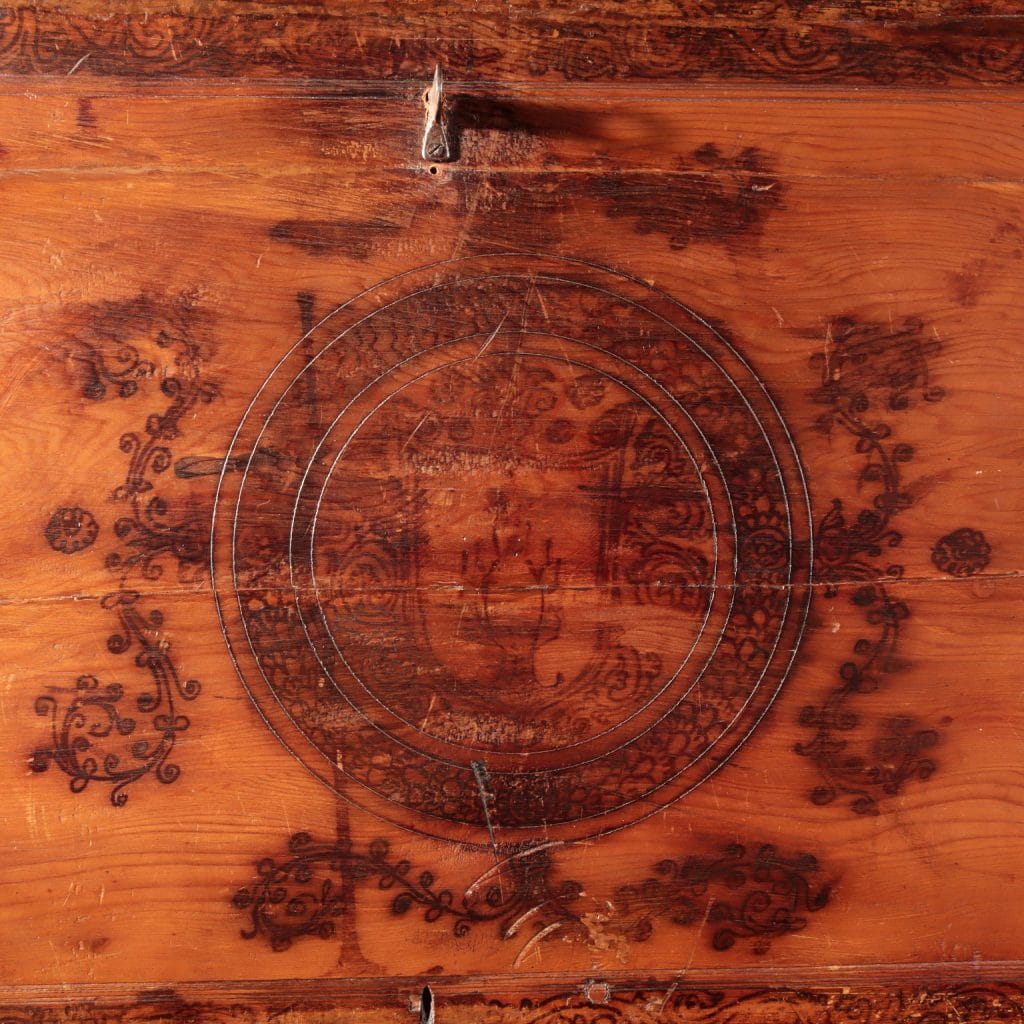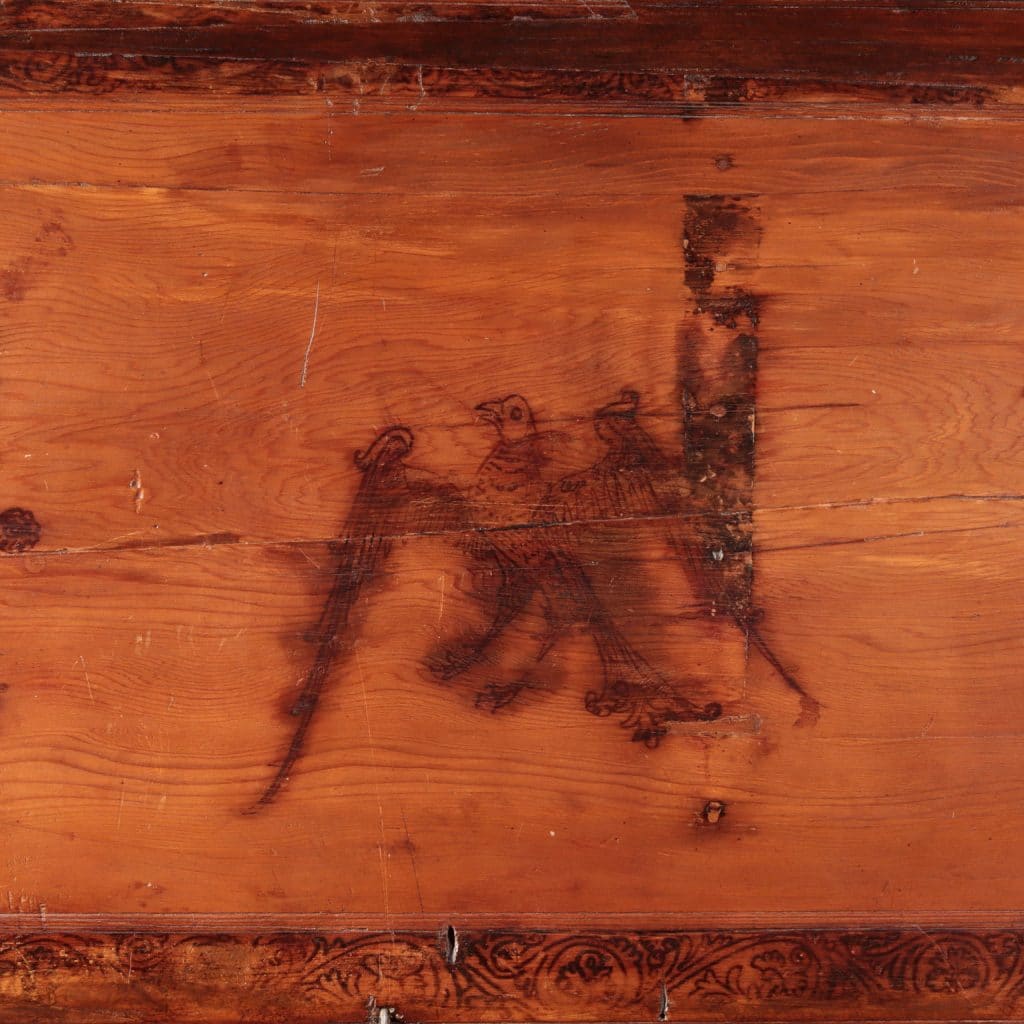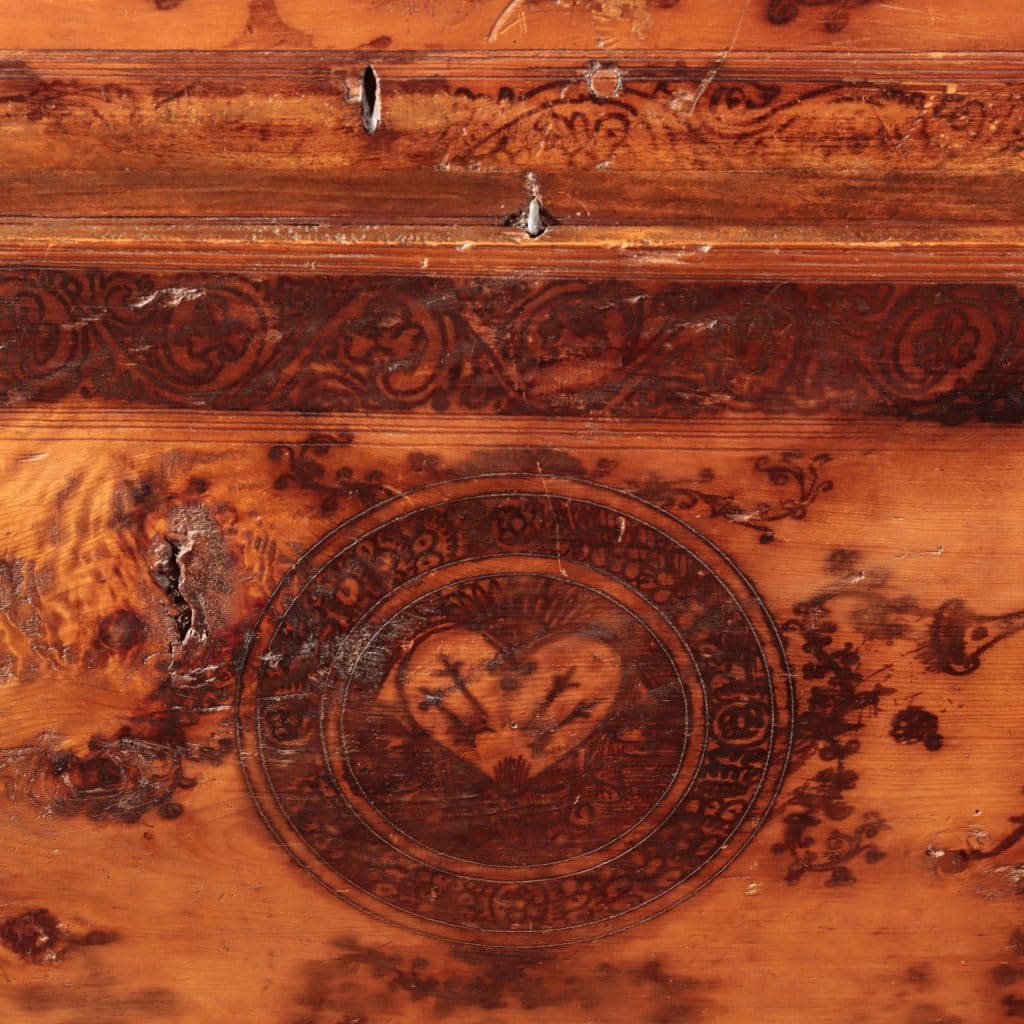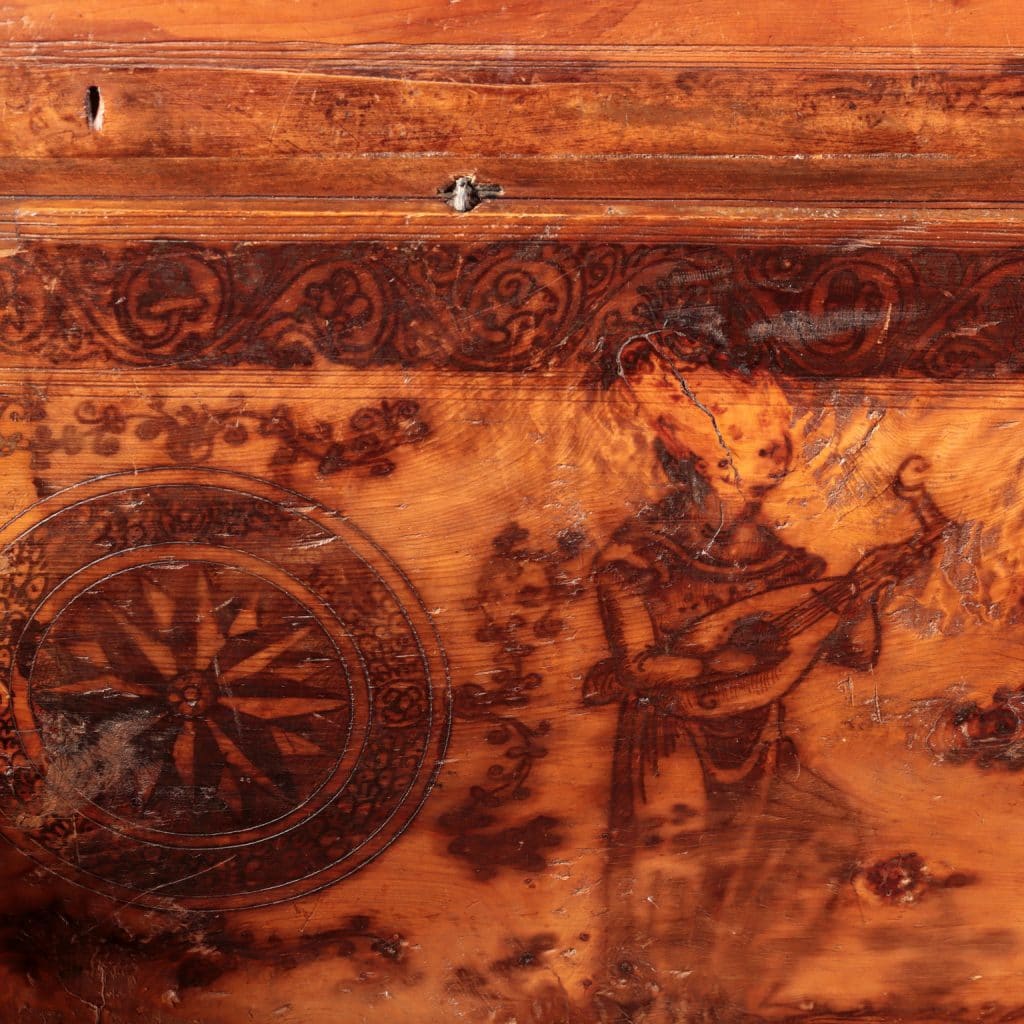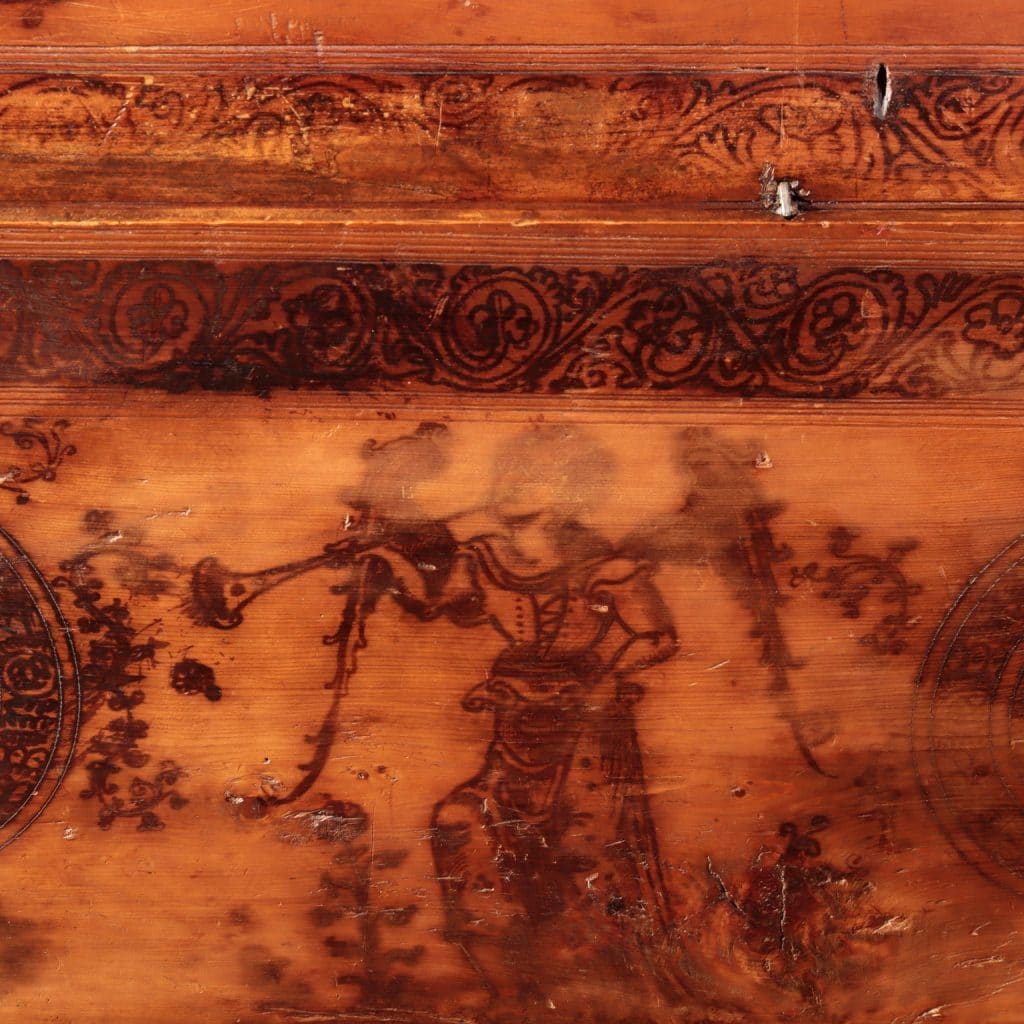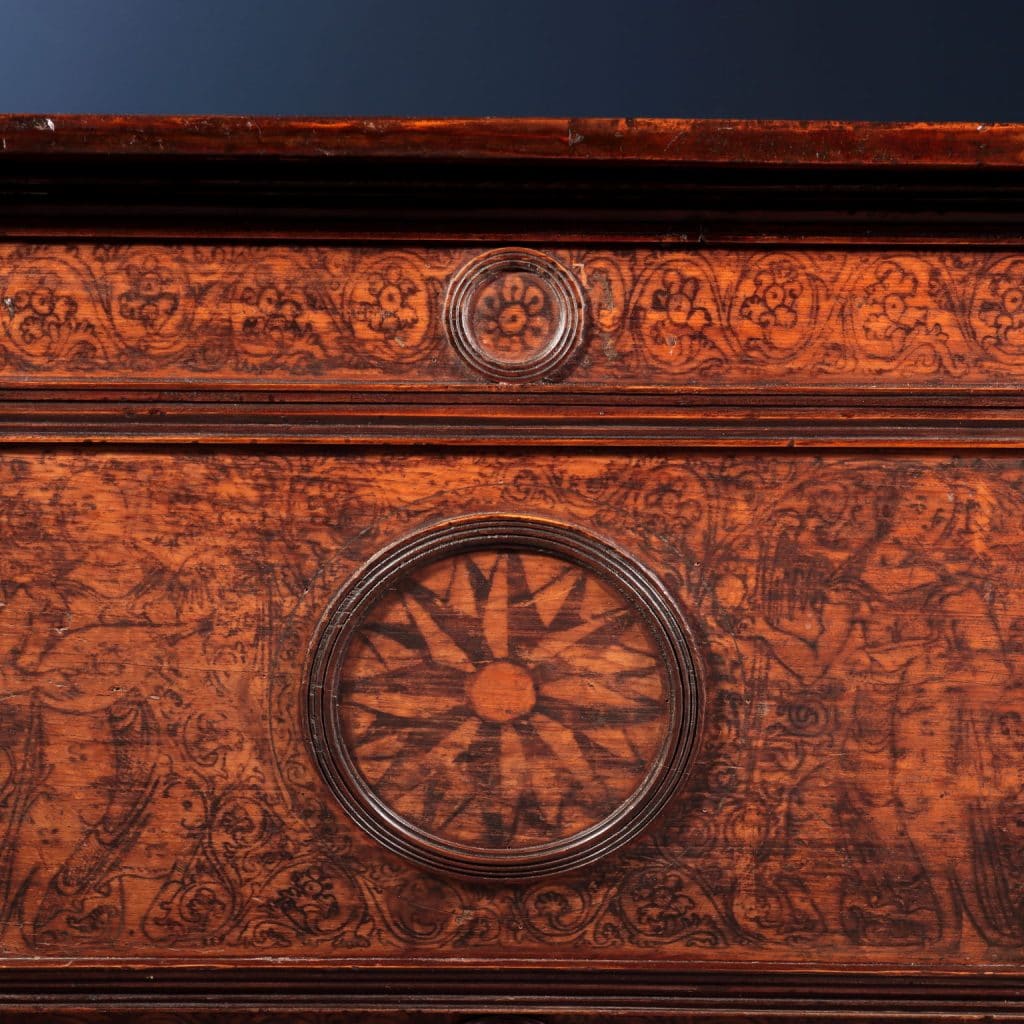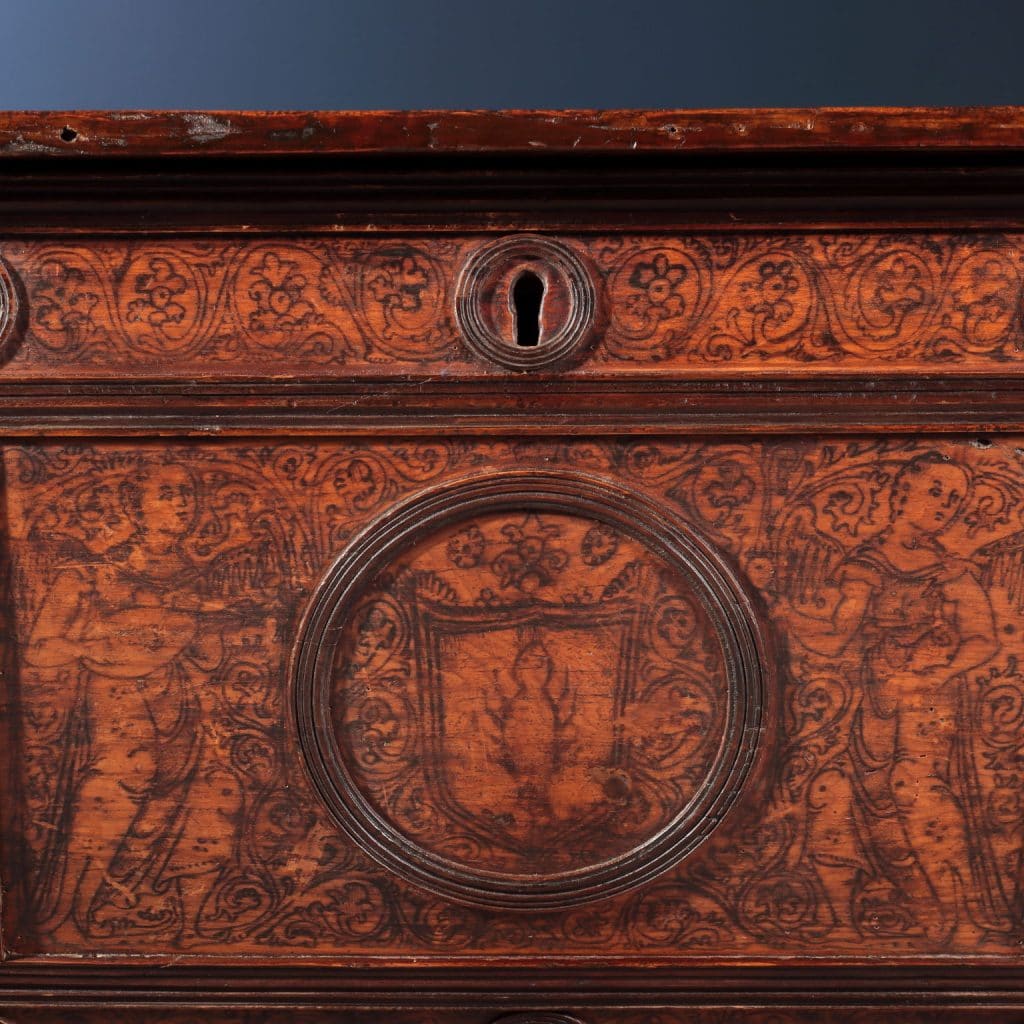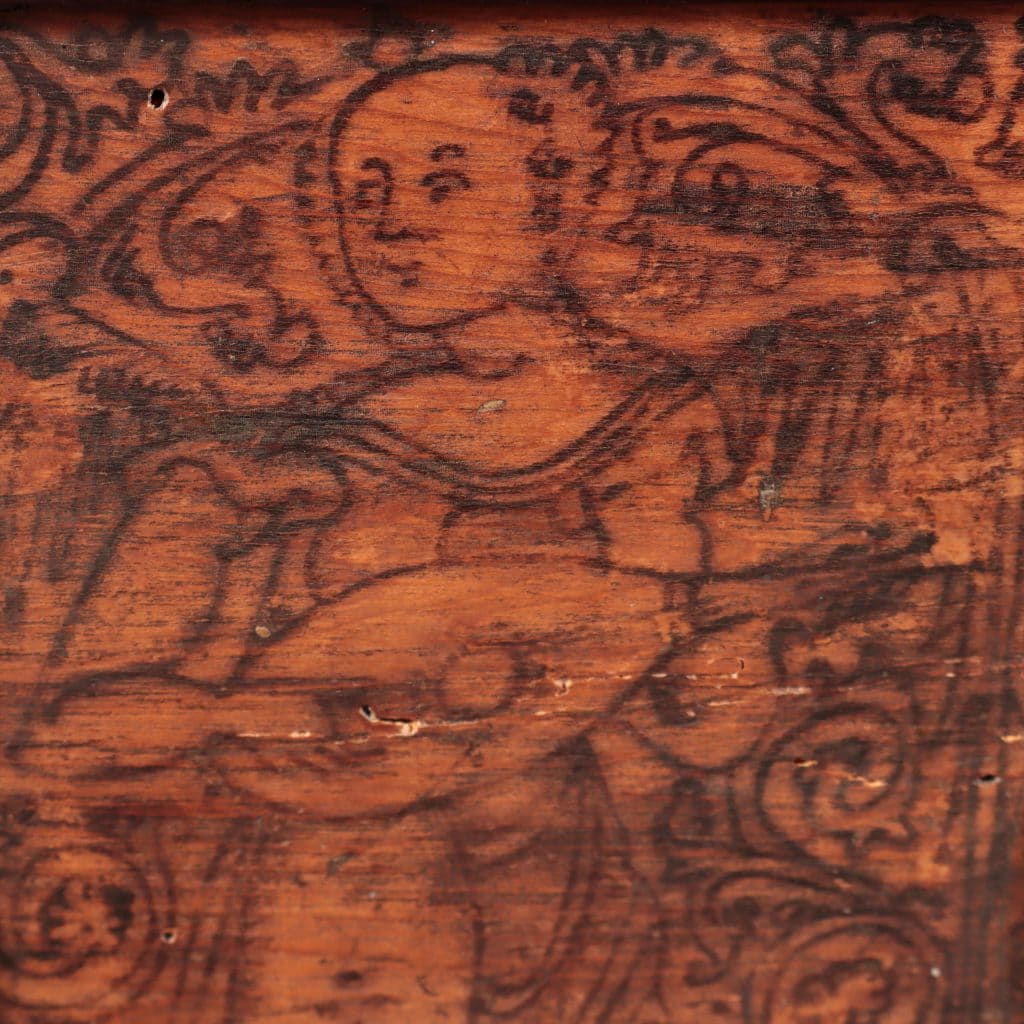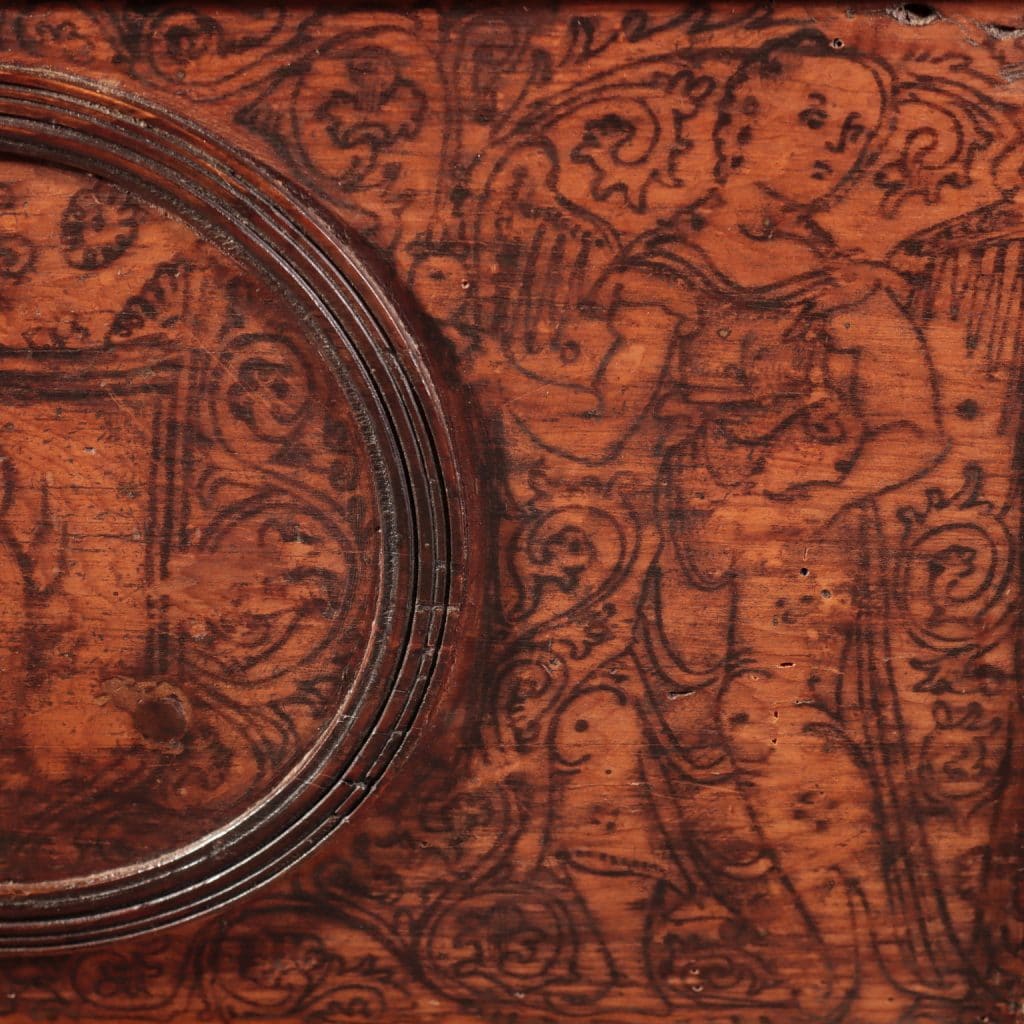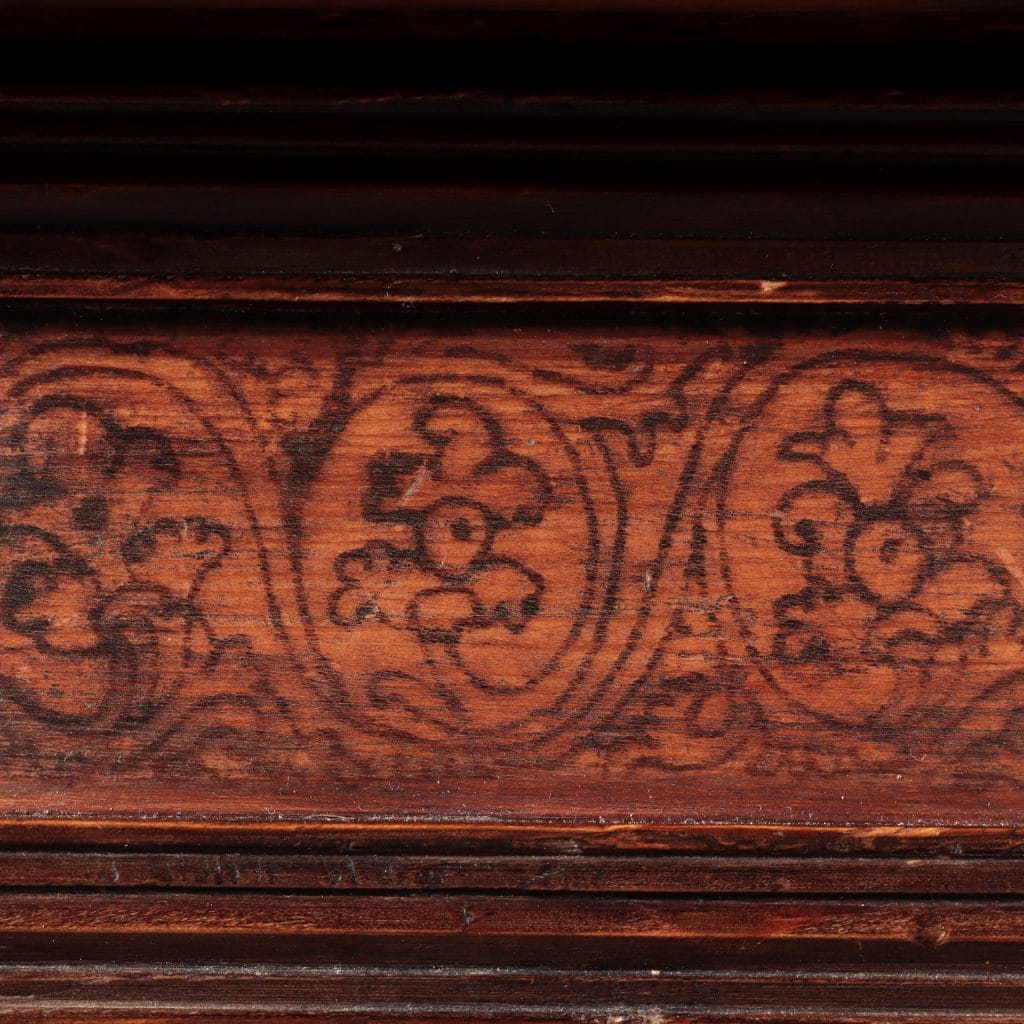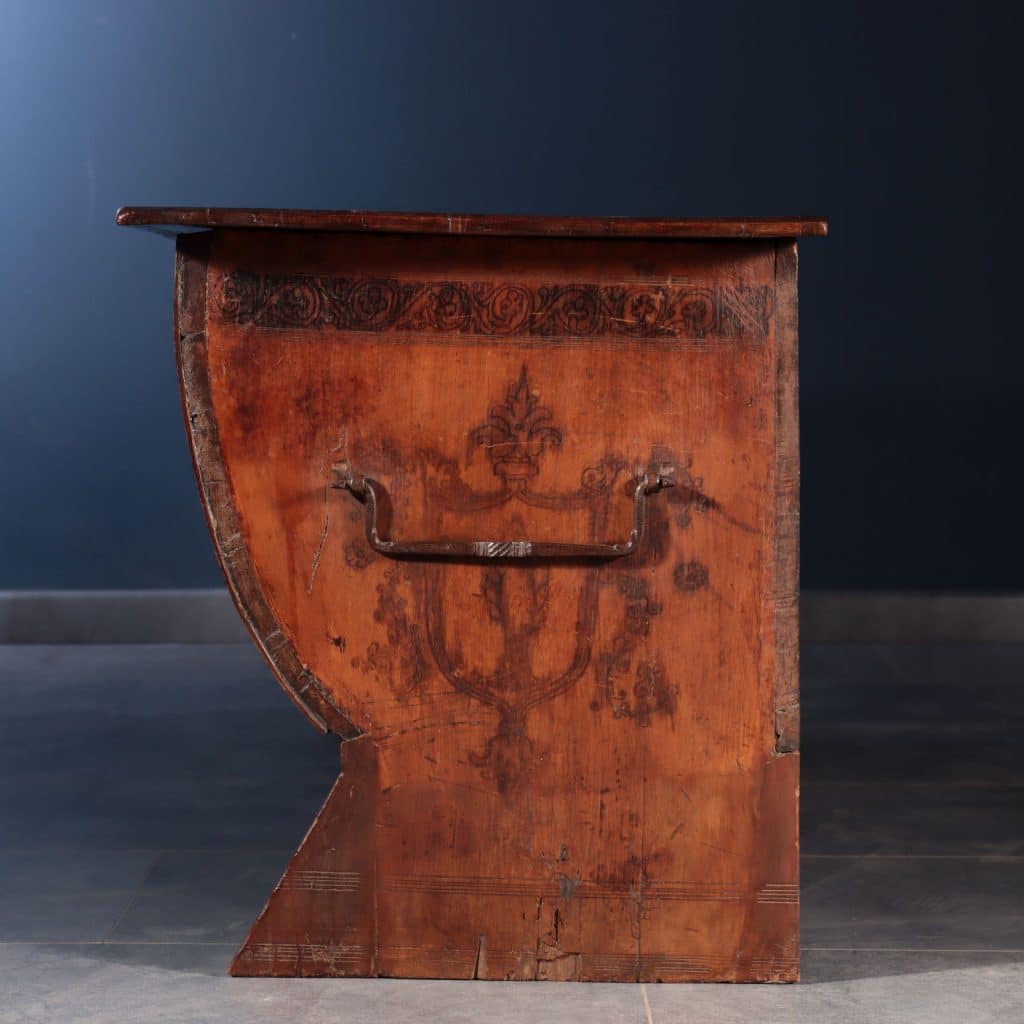Cassone XVI century
Northern Italy, 16th century
Description:
The furniture has a convex shape on the front with an opening top. In stone pine, the surface is started with applied frames and round frames with a decorative motif. The whole surface has a pyrography decoration. On the front in the three central squares in a thick leafy decoration there are six musician angels, placed around two rose windows and the central coat of arms; the rest of the front has a flowery fret in which putti are placed. The heraldic coat of arms contains a shrimp. On the sides where the iron handles are placed, the Greek continues in the upper band while the emblem is repeated in the center.
The chest is also decorated inside with three rosettes, two musicians and a new coat of arms with a heart pierced by swords. Also the back of the top, visible open, has a rose window with the family crest and two eagles. There are signs of two ancient but false hinges. From the traces left they must have been lanceolate from the eighteenth century and covered part of the decoration in an improbable way. Originally it most likely wore ring hinges like the ones it now wears. There are two restorations on the supporting points of the sides.
Dimensions: 47 x 137 x 42 cm
Historical-stylistic analysis:
Cases with convex front are commonly given to the Venetian area, numerous bibliography gives examples and we ourselves have been in possession of a gilded box with the same shape belonging to a Venetian family: the Belloni. The house to which this furniture seems to belong is that of the Gambara, “red shrimp seen from the back, placed on a pole on gold” (Spreti 3 ° p. 348). It is one of the most powerful families in the Renaissance era in Brescia, a city that is heavily influenced by the Veneto, although we are not allowed to know for sure whether the case is Venetian or of Brescia production.
There is another very similar chest preserved in the Castello Sforzesco in Milan at the Civic Collections of the Museum of Applied Arts, published by Enrico Colle. The correspondence is such as to suggest that the two furnishings come from the same shop, even in that case we have the same motifs with circle frames and the same pyrography decoration. The leaves are repeated and even in that case there are rose windows and figures of musicians, but larger in size.
Other crates are published in texts related to Venetian furniture and in any case of the Alpine arc but mostly they are pyrographed crates but with a lowered bottom, a different type of production that required more abundant thicknesses. The destination was normally that of a wedding chest, made to contain the linen: the material used, mostly stone pine and cypress, in fact guaranteed protection from moths and a characteristic scent of the wood.
Bibliography:
– Clelia Alberici, Il Mobile Veneto, ed. Electa 1980;
– Enrico Colle, Museo d’Arti Applicate, ed. Electa 1996;
– Clara Santini, Mille mobili veneti, ed. Artioli 2000;
– Gilda Rossi, I Mobili nelle civiche raccolte artistiche di Milano, ed. Aldo Martello, Milano 1963.
- Cassone XVI century

Antiques, Art and Design
FineArt is the new ambitious Di Mano in Mano project that offers an exclusive choice of antiques and design works, presenting them for their singularity and uniqueness.

